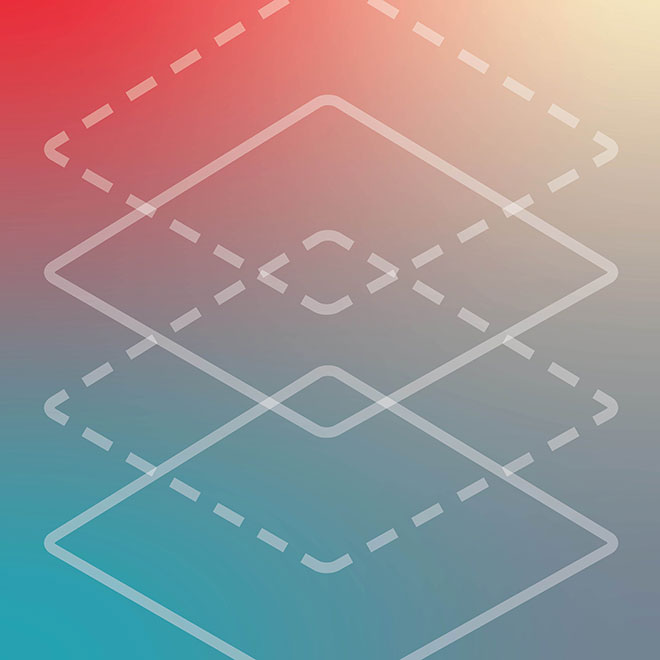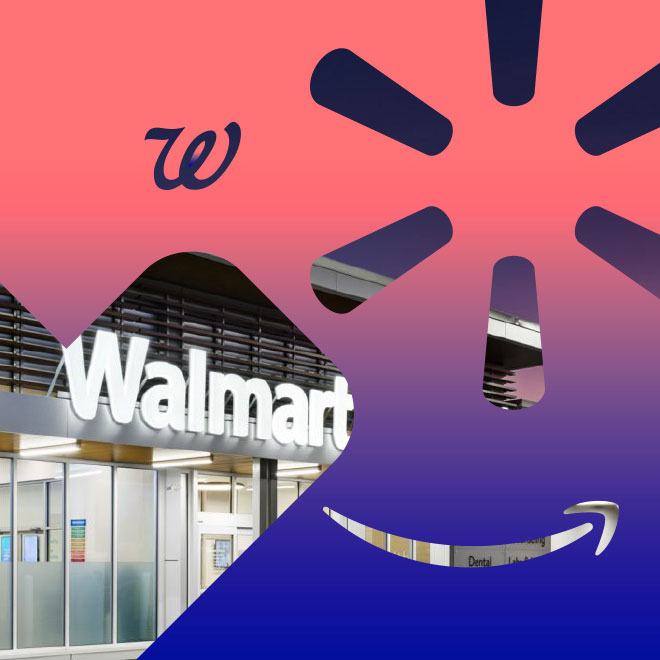Reorganize for the 21st Century
Estimated Read Time: 3 Minutes
Retail has entered a new era where it's more important than ever to be proactive in responding to consumer (and government) demands. Brands that thought they knew what omni-channel meant have been put to the test as we see retailers offering more integrated online to offline services, fulfillment, and communication.
Terms that many brands were just starting to explore—micro fulfillment center, dark store, automation—are now a part of everyday conversations. Consumers don't care what you call it, what they care about is convenience, speed, and reliability – they want the products they need and want, when, where, and how they want them. In fact, consumers are one (or four) steps ahead of most retailers right now.
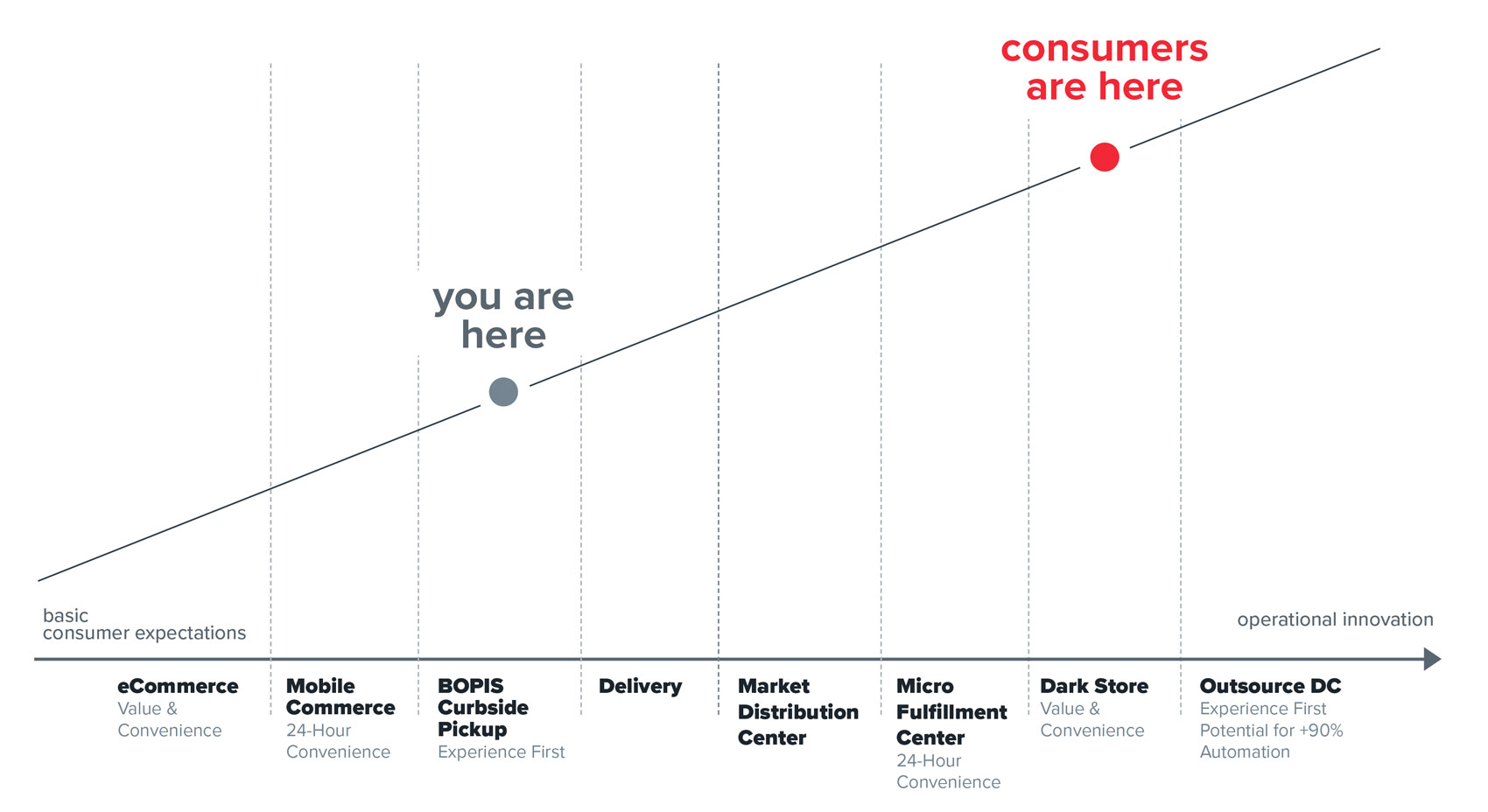
At WD Partners, we wanted to learn more about the gap between consumer expectations and brands' lagging response. We fielded a survey of 2,100 Americans to explore just how willing consumers are to shop some of the alternate formats being adopted by big name brands. By rating the likelihood of purchasing from a pickup only/dark store in various categories, respondents revealed that they are very open to these alternative options, especially in restaurant, big box and grocery verticals.

Some retailers already get it. In a recent earnings call for Target, the brand revealed that same-day services experienced 45% comp growth, accounts for over half of their digital sales, and continues to be the most rapidly growing part of the business. And because their same-day services have better economics than shipping from a warehouse, their average fulfillment cost per unit came down by over 50% (read: better margins)1.
Automation is another idea popping up in headlines and conversations with more frequency. A recent report shows the warehouse automation market is expected to reach $33 billion by 2030. Why should brands pay attention? Because the current boom in e-commerce is compounding the major labor challenges faced by the global logistics industry. It's projected that existing fully automated systems can reduce warehouse-related labor costs by up to 65% and logistics-related spatial use by up to 60% at the same time as it increases the maximum output capacity2.
With the efficiency brought along by warehouse tech, a natural next step is a hybrid fulfillment store solution. Dark stores are appealing to customers. Micro-fulfillment centers allow brands to increase margins while decreasing fulfillment costs. And ecommerce is growing at a rapid clip creating more opportunities for automation, supply chain efficiencies and operational excellence. So where is the disconnect for brands? Perhaps it can be explained by the traditional way companies are organized.
To be honest, you're organized wrong. Your company is following an old organizational model and you can't meet the speed of the new customer experience.
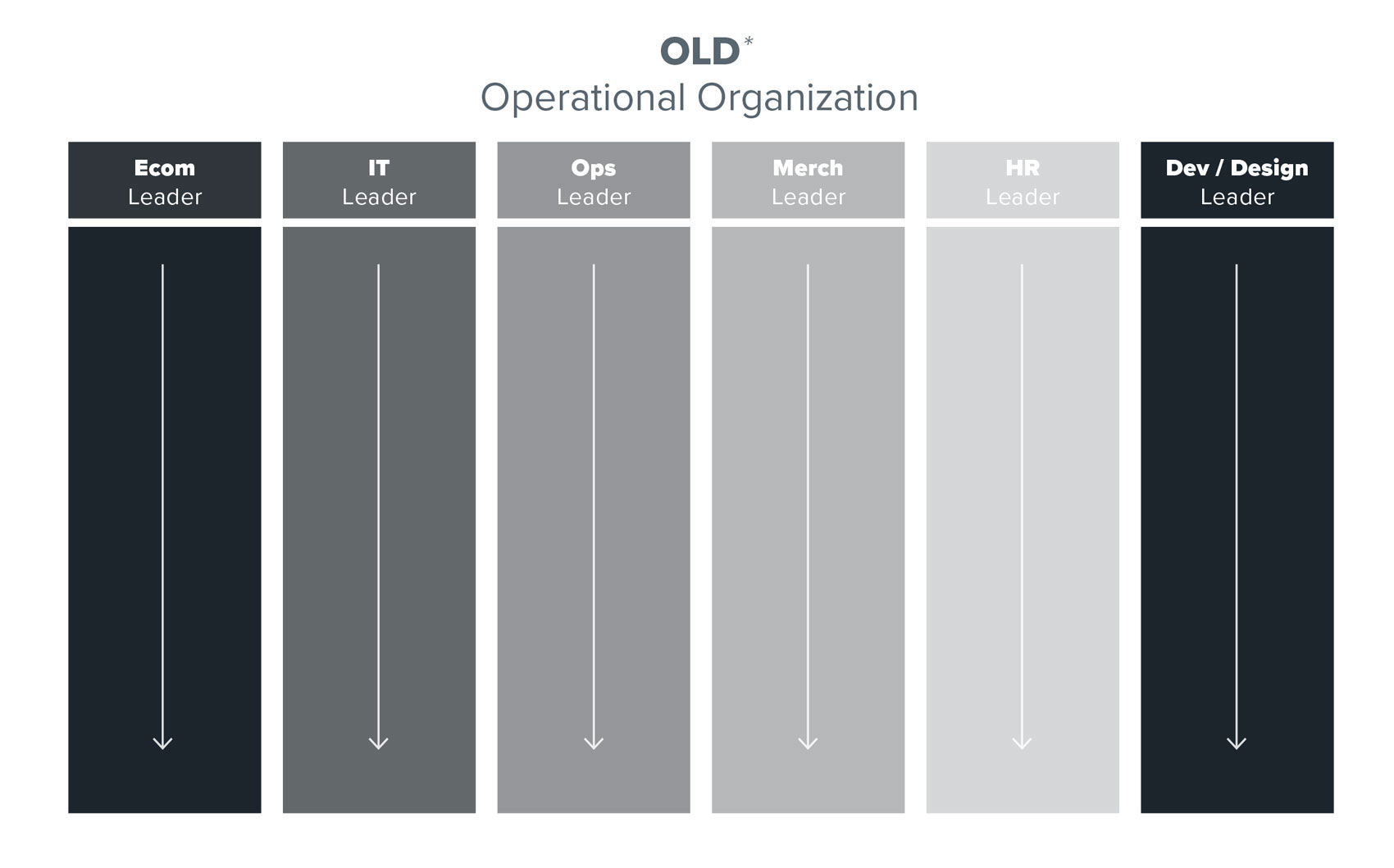
In the visualization above, is there an "owner" of BOPIS? Or does it kind of fall in the eCom leaders' responsibility as well as IT, Ops and Design?! When disciplines are siloed, leaders only focus on their area of expertise rather than the customer journey in total and how best to meet their needs whether instore, online, in their car, or on their phone.
Our recommendation…reorganize around the consumer. Take those key moments of distribution and consumer interaction and carry them through across your traditional departments.
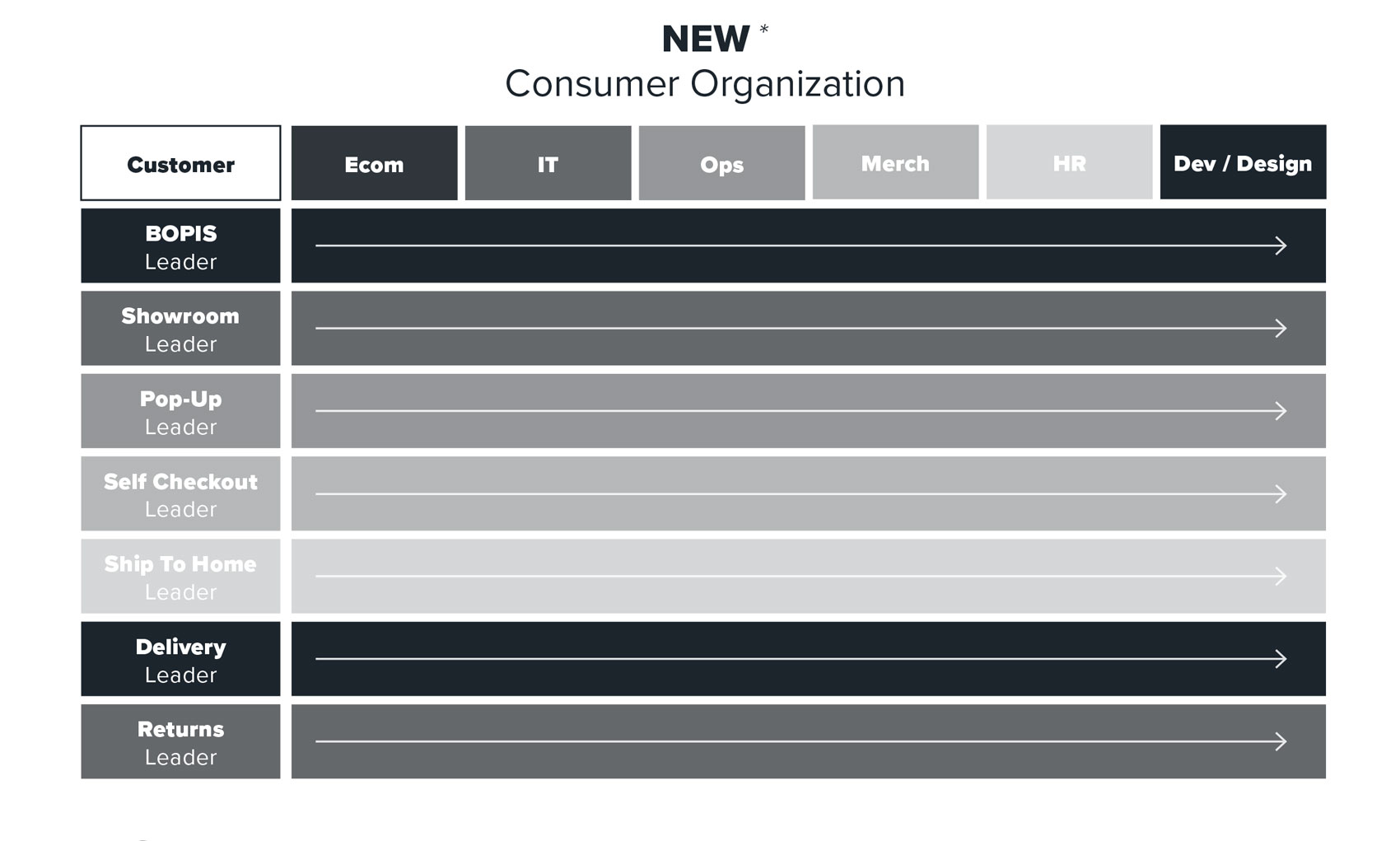
By adopting and integrating technology you'll create new points of interaction and synergies for both your company and your consumers. Start by placing less emphasis on specific disciplines and more on the holistic solutions. Organize sideways and horizontally, bringing teams together to execute on innovations. Instead of pulling someone from each vertical function or silo, bring together an entire new team—one that's empowered from the top to execute.
The acceleration of retail is real. For now, temporary adjustments to help fulfill online orders and to serve curbside customers will help retailers maintain operational status, but future growth depends on thinking completely differently—like a 21st century business. If you'd like to talk about next steps for your organization and how we can help you execute at scale, contact us at talkwithus@wdpartners.com.
Sources







